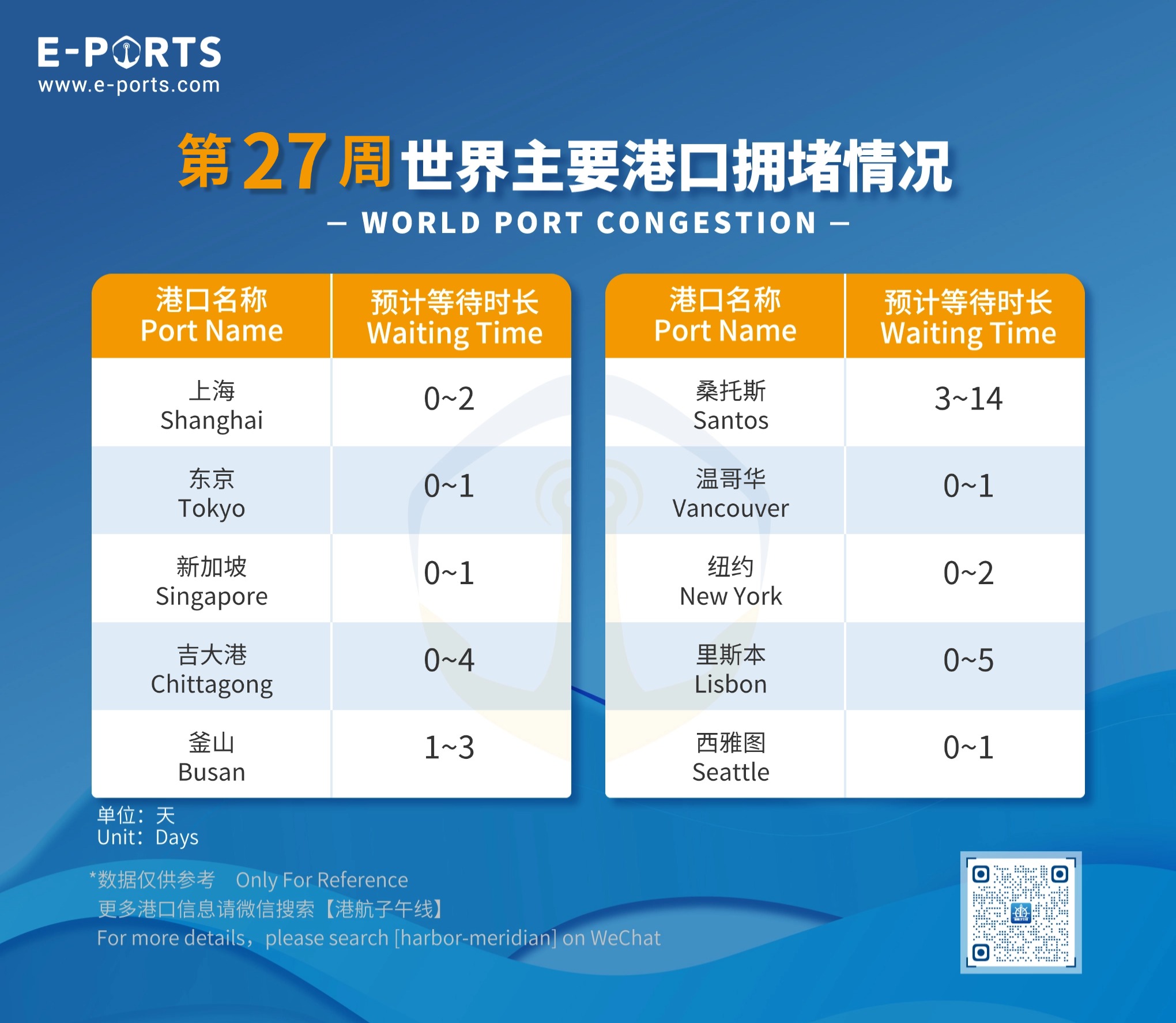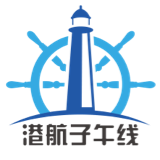Port Congestion | Week 27 Line-up: European Ports Remain Clogged! One-Way Shipping Costs May Exceed €150,000! Strike at Bangladesh's Largest Port! 港口拥堵 | 27周 line-up 欧洲港口持续拥堵!单程运费成本或超15万欧元!孟加拉最大港口罢工!

Overview of Congestion
拥堵情况简介
Major Congestion Persists in European Ports!
As the July 9th "tariff deadline" imposed on Europe by Trump approaches, Europe's already severely congested major ports are experiencing even worse bottlenecks. Simultaneously, extreme weather is causing ripple effects. Heatwaves have led to falling water levels in rivers like Germany's Rhine, forcing a halt to barge transport. Inland waterway capacity has plummeted by over 40%, causing further pile-ups of cargo at ports that previously relied on river diversion.
Congestion is particularly severe at key ports like Rotterdam, Antwerp, and Hamburg. Some terminals have been forced to temporarily stop accepting new cargo. Crane productivity at the Port of Hamburg has decreased by nearly 30% due to safety restrictions imposed for high-temperature operations. International shipping analysis agencies estimate that without significant improvement in weather conditions or the policy deadlock, this crisis could persist for another 3-6 months, potentially triggering a new wave of global supply chain disruptions.
Leading shipping lines have issued notices since July 2023, imposing water level surcharges of €30-50 per tonne on containers transiting the Rhine River. For a vessel carrying 5,000 tonnes of coal, for example, this adds over €150,000 to the one-way freight cost.
欧洲港口持续大拥堵!
随着特朗普给欧洲设定的7月9日“关税大限”将至,欧洲原本就拥堵不堪的各大港口更堵了。同时,极端气候带来连锁反应,高温热浪致使德国莱茵河等河流水位下降,驳船运输被迫中断,内河航运能力锐减超 40%,原本依赖内河分流的港口货物进一步堆积。
其中,鹿特丹、安特卫普与汉堡等主要港口的堵塞情况尤为突出,部分码头不得不暂停接收新货物;汉堡港起重机作业效率因高温作业安全限制下降近 30%。据国际航运分析机构预估,若气候条件与政策僵局无明显改善,该危机仍将持续 3-6 个月之久,或将引发全球供应链新一轮震荡。
头部航运公司自 2023 年 7 月起相继发布公告,对途经莱茵河的货柜加收每吨 30-50 欧元的水位附加费。以运载 5000 吨煤炭的货轮为例,单程运费成本增加超 15 万欧元。
London Gateway Port Operations Disrupted Following Major Drug Seizure!
Over the past few weeks, the Port of London Gateway has faced a series of operational challenges causing cargo delays. These issues included IT and power failures, rail incidents, and vessel delays. On June 26th, freight sources indicated that only 50% of the ship-to-shore (STS) cranes were operational and vessel berths were full. Rail transport also faced frequent problems. A rail incident on June 30th damaged infrastructure, limiting rail capacity and halting the planned movement of 43 containers last weekend.
As of Monday to Tuesday morning (July 1st), rail services had returned to normal, but a significant backlog of containers awaited movement. The rail operator estimated that over 500 containers had failed to move by rail so far this week.
Delays may also be linked to a major drug smuggling bust by UK Border Force. Last week, in an "intelligence-led" operation, UK Border Force discovered 2.4 tonnes of cocaine deep inside a container arriving from Panama. Reportedly concealed beneath 37 other containers in an attempt to evade detection, the cocaine was divided into more than 2,000 blocks with an estimated street value of nearly $133 million, marking the sixth largest seizure of its kind on record.
伦敦门户港运营受阻 重大毒品查获!
在过去几周,伦敦门户港遭遇一系列运营挑战,导致货物运输受阻。这些问题包括 IT 和电力故障、铁路事故以及船舶延误。6 月 26 日,有货运指出,当时仅 50% 的模块起重机可正常作业,船舶靠泊位也已满负荷。铁路运输同样问题频发,6 月 30 日的铁路事故损坏了基础设施,限制了铁路运力,致使原计划上周末运输的 43 个集装箱暂停。
截至本周一至周二(7 月 1 日)早晨,铁路服务恢复正常,但仍有大量集装箱积压待运,据铁路公司估计,本周迄今已有超 500 个集装箱未能通过铁路运输。
延误或许也与英国边境部门查获的走私毒品有关。上周,英国边境部队通过 “情报主导”行动,在一个从巴拿马抵达的集装箱深处发现了 2.4 吨可卡因。据报道,这些可卡因被埋在 37 个其他集装箱之下,试图躲避检查。这些毒品被分成 2000 多块,预估街头价值近 1.33 亿美元,成为有记录以来的第六大查获案件。
Strike at Bangladesh's Largest Port!
On the last weekend of June, Bangladesh's busiest port, Chittagong, experienced a complete two-day shutdown. Import and export operations were paralyzed, adding new strain to an already heavily pressured supply chain. This strike is expected to cause direct economic losses of approximately $222 million to Bangladesh's vital ready-made garment (RMG) industry. The action was organized by the NBR (National Board of Revenue), protesting government restructuring regulations announced on May 12th. The regulations plan to abolish the NBR and establish two new agencies in its place. The NBR subsequently organized nationwide work stoppages involving its employees across tax, customs, and VAT offices.
The strike forced the suspension of operations at numerous land ports across the country, including crucial border crossings with India like Akhaura and Bhomra. This situation was further exacerbated by India's previous restrictions on imports of certain Bangladeshi goods, including garments, via land routes.
Despite the government issuing a return-to-work order on the evening of June 30th, emphasizing that import-export operations constitute an "essential service" and demanding the NBR system resume work, the backlog created had already caused significant disruption. On July 1st, the Port of Chittagong alone faced the immense task of loading 6,000 to 7,000 containers onto five vessels. Pressure on customs clearance and terminal operations surged dramatically. According to port authority data, by Monday morning, 10 ships were berthed at the terminal, with an additional 19 waiting at the outer anchorage for entry.
孟加拉最大港口罢工!
6 月最后一个周末,孟加拉国最繁忙的吉大港遭遇了全面停摆,时长两天,进出口业务陷入瘫痪,给本就面临巨大压力的供应链又增添了新的困扰。此次罢工预计将对孟加拉国至关重要的成衣行业造成约 2.22 亿美元的直接经济损失。此次行动的组织者是 NBR(孟加拉国税务局),其对政府 5 月 12 日宣布的重组条例心怀不满。该条例计划废除 NBR 并分设两个新机构,NBR 随即组织员工开展全国范围的停工,涵盖税务、海关及增值税办公室等。
受此次行动影响,全国多地陆路口岸被迫中断运营,包括通往印度的重要边境口岸 Akhaura 和 Bhomra。而印度此前已限制包括成衣在内的部分孟加拉商品通过陆路进口,这一举措进一步加剧了局势的紧张。
尽管政府在 6 月 30 日晚发布复工令,强调进出口业务属于 “关键服务”,要求 NBR 系统恢复工作,但此前积压的工作已经造成了实质性的冲击。7 月 1 日,仅吉大港港口就面临着将 6000 至 7000 个集装箱装运至五艘船上的巨大任务,清关和码头作业面临的压力剧增。据港口管理局的数据,截至周一上午,已有 10 艘船停靠在码头,另外还有 19 艘船在外锚地等待入港。









